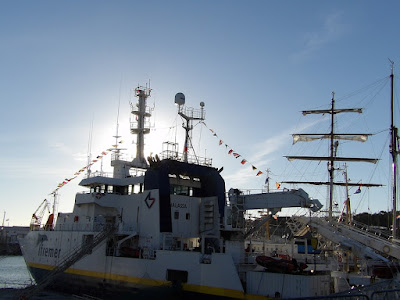The marine environment is dynamic and needs accounting regularly for noticing the dynamics under the blue.
Ocean study is only possible using quality ocean survey equipment that measures waves and water motions and records sound traveling at the bottom of the seabed. The sum of the water movement system is very complex, moving in both the horizontal and vertical directions. Therefore, a range of marine products is available for seabed mapping that works perfectly well under extremely deep and shallow water.
Exploring The Seabed With Hydrography
With the advancement of technology, equipment like underwater camera rental contributes significantly towards delivering complete image and video capturing facilities underwater.
Also available are accessories like sound velocity sensors, mounting kits, cables, winches, gondolas, and INS systems for hydrography.
What Are Hydrography And Hydrographic Surveying?
Hydrography is the branch of science dealing with measuring and describing water bodies' physical features and their coastal land areas.
Hydrographic surveying is the science related to measuring and describing the features of seabed that crucially affect:-
Maritime navigation
Oil exploration and drilling
Pipeline damage assessment
Marine construction
Port and harbor maintenance (dredging)
Coastal zone management
Offshore resource development
Coastal engineering and many other related disciplines
Using ocean survey equipment like sophisticated computer systems and different instruments for collecting data, hydrographic surveyors analyze the collected data complexity.
Hydrographic surveying accuracy is mainly dependent on factors like quality of sound installation, quality of personnel operating the equipment, and their ability to analyze the data collected.
Hydrographic Surveys Instruments
As hydrographic surveys are very complex, there is a need to use advanced technologies and valuable devices.
Modern surveys utilize various software and equipment installed on inflatable craft such as zodiacs, small craft, Autonomous underwater verticals (AUVs), Unmanned underwater vehicles (UUV's), large ships, Sidescan, single beam, and multibeam equipment.

How To Find The Lost But Valuable Underwater Equipment?
An acoustic release is a device used for tracing and recovering valuable underwater equipment. The release is attached to the anchor of a buoyant instrument and stays there until it is commanded to be released underwater.
How Do Acoustic Releases Work?
An acoustic release can receive and transmit signals to a surface instrument utilizing battery power. Lasting for at least a year or two, acoustic releases are used in shallow water or deep water and for large, heavy loads or smaller instruments. This instrument has particular use in the deep areas where divers cannot recover the underwater instrument.
A shipboard transmitter releases a short ping at a specific frequency to locate the acoustic release. The release responds to the transmitter, indicating the distance from the ship it is located and where it is still operating.
When the equipment is ready to be recovered, the transmitter first finds out the cost of the release location and then sends out a particular coded signal which commands it to release. Once the acoustic release goes off the anchor, it helps the instrument float onto the sea surface to be recovered.
Features Of A Typical Acoustic Release Device
Individually addressable
Lightweight and compact
Efficient pressure neutral mechanism
Durable construction for short-term and long-term deployments
Equipped with a positive drive off release mechanism
High tensile strength
Mooring safety (Corrosion resistance, secure command coding, and unraveled operating life)
Check For The Best Fit Of Acoustic Release
Acoustic releases are designed to handle a specific maximum load, and they can have a minimum load rating so that the mechanism operates reliably.






